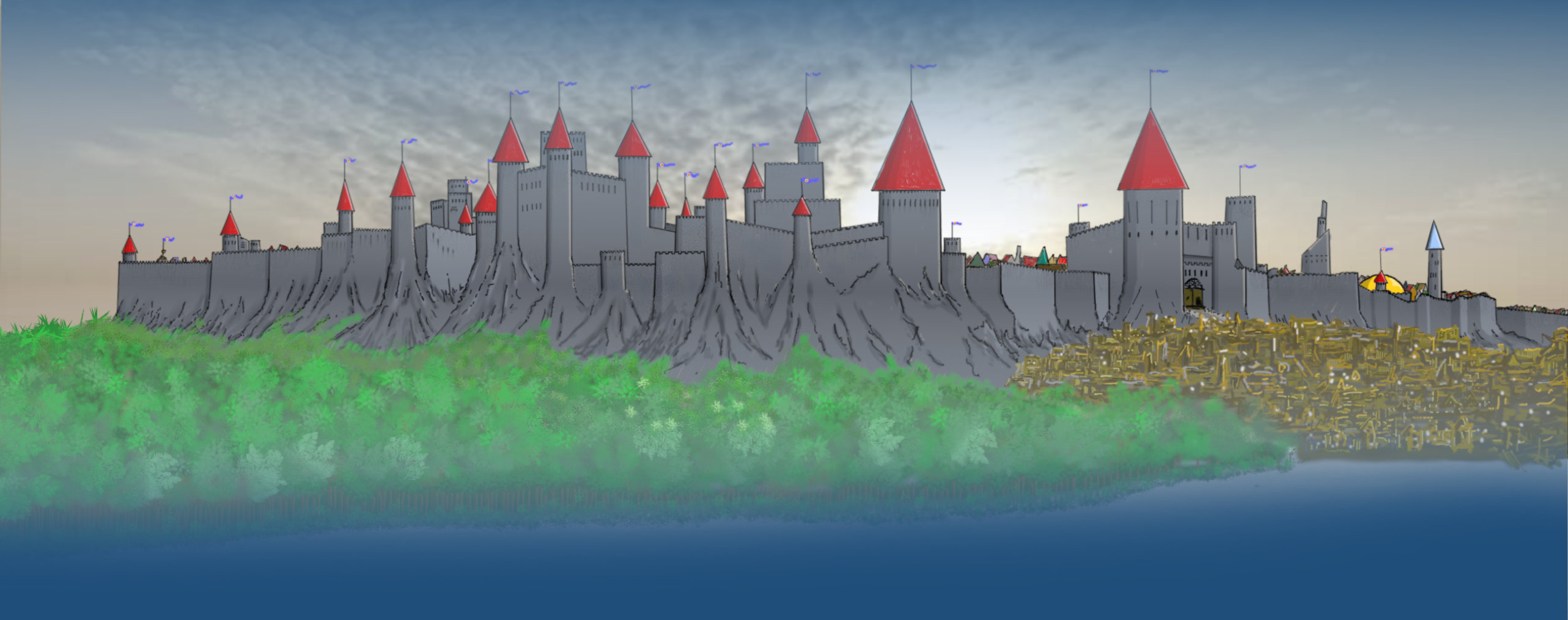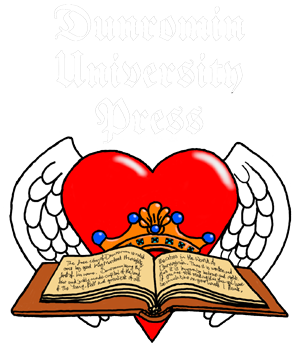The Real Value of Coins
Dated: 17 Apr, 2020

This morning I spotted a post by Matt Ratcliff on the Facebook Group "Dungeons & Dragons (AD&D 2nd Edition)” about how coins might vary in appearance from race to race. It reminded me of the following; extracted from SM01 the Players’ Guide to Dunromin verbatim below. This is one of the many ideas I have put into my publications – 35 years in the making! Note that this system does show how ridiculously large coins must be to fit with the D&D 1st ed. Encumbrance System, so maybe take the sizes with a pinch of salt.
[snip]
The treasure found on campaign is the life blood of the FRPG world, however the nature of producing coinage in a medieval setting is more complex than it may first appear. In FRPG terms the coins are all of a uniform size and purity, every Gold Piece is assumed to have the same construction and therefore value whether it's being passed over in a tavern to pay for a night's accommodation or found in the horde of a ten-thousand-year-old Lich. This is a game construct that is merely put in for convenience and in no way recognises the fascinating panoply of coinage that would really be travelling around in the Multiverse.
The Easy Solution
Just carry on as it stands. There's nothing wrong with this, indeed in the Viking/Danelaw era in Europe the accepted unit of currency for large payments was pounds of gold and silver. It didn't matter the form of the metal, just its weight. It’s not clear how they standardised the 'pound' they refer to but the system seems to have worked OK. So, it's perfectly fine to carry on using the units and values given in the main rule books. Or you might think about something even more infuriating.
The Dunromin Coinage System
In Dunromin, being Dunromin, there is a little more to money than meets the eye and it's an excellent example of how the city and country has adopted a simple idea and made it work very efficiently. First of all, the standard exchange rate is termed the Dwarf Rate as it was first invented by the Dwarves many millennia ago and they have stuck to it. Originally, the city was using several different coinage forms across the country but in CY296 the King of the time (King Michael I) proclaimed the Dwarf Rate the new city standard. This decision was mainly for convenience but also slightly political as the city was trying to expand the magic item manufacturing industry at the time - Dwarves made the best weapons and the Dunromin mages were the best at enchanting them. Or at least the cheapest at the time. The adoption of a standard monetary system made trade easier, especially as the Elves of Loom had already adopted the Dwarf Rate hundreds of years previously. The Gnomes of Constantan also blended the Dwarf Rate with their own, very similar system, although the Gnomes are the only ones to manufacture Electrum Pieces (so all eps found will be minted by gnomes, probably).
The Dwarf Rate (and the most common Dunromin slang for the quantity):
1cp (Bob or sometimes Dud)
10cp = 1sp (quid)
10sp = 1ep (tenner, nomer or a gnomeling)
20sp = 1gp (score, twenty bit, or just 'a gold' rather than 'a gold piece') (= 2ep)
5gp = 1pp (Pony)
50gp (10pp) (Muppet, named after King Muppetrik whose only achievement in his 6 month reign was to have minted a 50gp gold bar/coin that he called an Imperial Galleon – very few are left in circulation. The term is also common insulting slang for a useless or simple person, eg; “Don’t put that there, you muppet!”)
1000gp (a grand, although there is no single coin worth this much)
Note that the word 'penny' is used in many references. It can mean 1cp or it can be a reference to any coin. The term 'Bit' is also used, e.g. "Can anyone change me this gold penny for twenty silver bits?" and variations thereon.
Coin Size and Manufacture
Each coin has to be a standard size such that they have the required mass of 0.1lbs (approximately 45 grams - from here on metric forms will be used because they make more sense than the other systems, even though feet and inches are quite fun for confusing people) of the native metal. Since the definition is mass rather than size, different coins from different civilisations and even periods of time will have different thicknesses compared to diameter, possibly different shapes. The following are the Royal Mint standard sizes for Dunromin coins and the year they started being manufactured in these sizes, based on the counter-intuitive idea that the bigger the coin's diameter the less valuable it is.
Copper - 45g of copper has a volume of 5.0cm3; this is used to make a coin 4cm diameter by 0.4cm thick. Common since CY490.
Silver - 45g of silver has a volume of 4.3cm3; this is used to make a coin 3.2cm in diameter and 0.5cm thick. Also common since CY490.
Gold - 45g of gold has a volume of 2.3cm3; this is used to make a coin 2.6cm in diameter and 0.4cm thick. This has been used since CY445 and was probably the model for the current coin designs, although its origins are not well documented.
Electrum (not Dunromin originally) - is 20% silver and 80% gold on Earth but is 60/40 on Barnaynia otherwise you can increase the value of your Electrum by Melting it down and splitting it up. You still could but the return would be minimal (that's not to say there aren't smiths buying Electrum in Constantan, bringing it back to Dunromin and splitting the alloy up again...). So 45g of Electrum has a volume of 3.5cm3. The gnomes fashion this into a square coin with a square hole in the middle of it. The coin is 3.6cm to a side and 0.5cm thick, with the hole 0.5cm to a side and slightly offset from the centre to match the designs cut into the coin's surface. The gnomes have been making these for hundreds of years.
Platinum - 45g of Platinum has a volume of 2.1cm3; which is used to make a coin 2cm in diameter and a chunky 0.7cm thick. They have been using this form in Dunromin since CY480.
Note that all Dunromin coins except copper have milled or decorated rims to avoid 'clipping', which is cutting or shaving off bits of metal to use separately to the coin while ostensibly keeping the coin's original face value.
Coin styles and origins
In archaeology coins are of great interest to historians as they give the investigator a lot of information about the nature of the settlement they are investigating, such as when it was inhabited, what civilisation inhabited it (or whom they were trading with) and so on. It is perhaps a neglected part of FRPG treasure hunting that players are not given this additional information when they find a treasure horde or perhaps search the bodies of fallen wandering monsters. For instance, if an orc is in possession of a newly minted Deep Elf coin this might give the party a clue as to how Deep Elf influence is expanding in a given area.
Coins minted in Dunromin follow a very traditional style which most people will recognise as very Earth-like. That is to say they have a profile picture of the current head of state on one side, along with their name (in common) and the year the coin was minted (following the CY or City Year dating format – years since the city was founded). Note that the date has only been included since CY120, not that this will particularly bother the players. The reverse ('Tails') side traditionally bears the coat of arms of the city’s ruling family, the Lufthearts, which is the winged heart. It is interesting to note that the value of the coin is not stated anywhere on the coin as this is taken as implicit from its size and material.
Old Karan coins tend to be smaller and thicker but are getting rarer. Deep Elf and other elven coins are similar although with which race of elves the designs originated is hotly debated. Gnome coins are square. Dwarf coins are round but have characteristic crenulations in the milling about the rim. Some orc coinage has been identified but these tend to be lozenge shaped. Many races have copied other designs, usually very badly, and such coins as gnolls, kobolds and others might possess will often be of any style. Whatever their origin, foreign coins are usually melted down when they come to Dunromin and re-minted, as is the practice amongst most civilisations. Coins from Oomland are square prisms of varying length and width while the coinage of the Yelnai Province are always round with various shapes cut out of the middle; they are carried on loops of material inside their clothes.
Dragons and other monsters do not mint their own coinage so might have any style in their hordes. The odd people of Skull Crag use a similar system to Dunromin but the coin dimensions and decorations are different (same mass, for game convenience) and the land around Deerlish has coins similar in style, size and value but with curious lumps and bumps on the rim. The Kingdom of Marln has a more varied and oft-changed coinage that other peoples tend to re-mint as soon as they can. Coins in this form will usually be counted as their nearest equivalent when counted up – the differences between individual coins being of marginal significance in game terms. The same can be said of coins from Grondarf, although there is very little trade with Grondarf as it is a very insular civilisation.
[unsnip]
I do hope you found that interesting and/or useful. Like I said, this is a very small sample of the 200+ pages in BOTH the Players’ and the Games Master’s Guides to Dunromin – both brimming with new ideas, NPCs, plot ideas and stuff. Bargains at five and ten bucks respectively! And this is indicative of the quality of content in my other publications too – which are on Pay What You Want….



